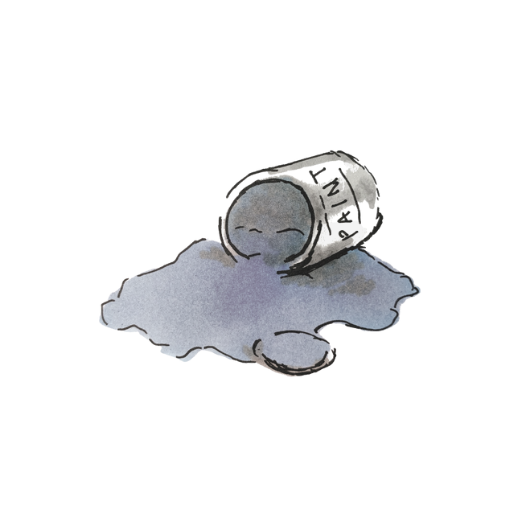
I’m going to do a few short blogs on spring planting as I get the garden ready for next year.
I like this time of year; it’s the start of a new cycle for the garden and it’s fun picking new bulbs and colour schemes. I should say that I’m not horticultural expert; my training extends as far as conversations with my mum, google searches and trial and error. But I shall pass on what I’ve learnt and if it helps, great!
Planning borders and pots

Firstly, you need to have a look at your borders to see what you’re working with and have a bit of a tidy up. Work out which borders get sun and which are a bit shadier, as well as assessing how much space you are.
Next, get rid of any spent annuals that are looking a bit untidy, clear any weeds, move and shrubs if you need or want to and I usually mulch the top with compost for a bit of a nutrient kick before I plant anything.
The same applies to pots; tidy them up ready for new bulbs and decide where they will be positioned. You can ‘layer’ bulbs in large pots (planting a different depths) and I’ll do a blog specifically on this too.
Choosing bulbs
Colours

If you’re not sure what colours will work well together, try using a colour wheel. Pick your favourite colour and those to either side will create a good, harmonious flow.

The colour directly opposite is a ‘complimentary colour’ and when placed together, these colours help each other pop.

Avoid choosing colours at random or every colour on the wheel. This will just create colour chaos and you’ll probably not be totally happy with the end result. A few colours usually makes more of an impacted that lots which end up all being lost in the mix.

This year I have chosen a mix of purples from bright purple to deepest almost black purple for my sunny border with orange and peach. Some of the bulbs I’ve chosen are shown below, but I have ordered more to follow! I have some anemones and crocus which will be dotted about everywhere.

In my shady border, the dominant plants are a bloodgood acre and blue/green euphorbia, so my colours over this side are burgundies and creamy whites.

I will have similar colours in my pots and the same principles apply.

Bulbs
Once you know what your colour scheme will be, you need to pick your bulbs. It’s good to get a mix because not only will they flower at different times and so make for good succession planting in the garden, but you can also play with different heights and textures.
The bulbs I usually go for are set out below – this is not an exhaustive list by any means, but I think it’s a good beginner’s list. I’d love to have suggestions for more to add next year.
Crocuses flower early and look lovely dotted through the front of borders or in lawns. They will grow in most soil but need some sun. If you have very heavy clay soil, it’s best to dig a deeper hole and add a handful of gritty mix. They will come up each year and in my experience have been easy to grow.

Anemones aren’t really bulbs at all but I plant mine at the same time as bulbs and they are a good spring plant to mix in. I find Anemone Blanda grow well in most soil (though adding in gritty mix helps) and they are happy in sunny or shady spots.

Daffodils are the quintessential spring bulb and again will grow in most soil but add the gritty mix in heavy clay. They need sun. Every year I’ve tried them in my shady border and although a couple have flowered they tend to look sad. Light shade is worth a try if they get some sun for part of the day; I’ve had varying degrees of success in my shady border. They flower at different times, generally starting around March and April, so check the variety.

Tulips come in every shade of the rainbow but will usually only flower once. I treat them as annuals, though occasionally they come back for a second year in my garden. They reproduce and often come back blind if they do come back. Tulips tend to flower later than daffodils and some flower really late, around May / June. They need sun and won’t be very happy in shade (again, give it a try if it’s just partial shade, but you’ll have more luck in your sunny border).

Alliums are fabulous, ornamental plants and some have huge balls of flowers as big as your head! I love them. They grow well in my heavy clay soil as well. They prefer full sun but I have found they will do ok in partial shade (I’ve had no luck with them in heavy shade). They are generally late flowering a bridge the gap into summer. The bees love them.

Fritillaries are pretty, delicate, little plants and although they prefer sun, they do ok in my shady border (not brilliantly, but ok). They seem quite happy in my heavy clay as well. I will be using them at the front of my shady border where I hope they will get enough sun to stay happy. Fingers crossed.
Snowdrops should do well in shade though in all honesty I’ve struggled with them. I will be having a go this year in the shady border but I will line the planting hole with my gritty mix to see if that helps them establish. They are natural woodland plants so should do well at the base of trees or neutralising lawns in shady spots.

Picking bulbs
If possible, get your bulbs from the shop directly rather than online, so you can check their quality. I don’t buy especially expensive bulbs, most of mine are from B&Q, though I think it you are going to get cheaper bulbs it’s worth checking them yourself. If ordering online from somewhere like Crocus or Sarah Raven, you can probably be quite safe on quality. I do order online from here for fancy additions and find them to be good.
Check the bulb feels firm and that there are no rotten bulbs in the bag. If any look a bit dodgy, get another pack. Avoid bulbs that have already sprouted if possible. If you do have a sprouted bulb, plant it straight away.
Storing bulbs
If you aren’t planning to plant straight away, it’s a good idea to store bulbs somewhere cool and out of direct sunlight. Tucked away in a dry shed, for example.
When to plant

I plant most of my bulbs in late September. Especially in recent years, September tends to still be quite a warm month (I’m in London), so early September feels too early. Fritillaries need to be in by the end of September as they won’t root well if it’s got too cold.
It’s best to put tulips down later though – November ideally – though I don’t like gardening in the cold so I tend to do mine in October when the ground is definitely chillier but I don’t feel like I might end up with hypothermia after a day planting! The reason is because tulip bulbs are more prone to disease if planted in warm ground, so best to wait if possible.
What you will need
A bulb planter is REALLY handy. You can get them in different sizes (as some bulbs, like alliums, are massive and others, like crocuses, are very small).
I have a handheld bulb planter which has been really handy for planting tulips, daffodils and alliums and this year I’ll be investing in a smaller one for corms.
Crocus has a selection here.
Next blog: Spring planting: Planting bulbs
I’m not going to go into any detail now about actually planting the bulbs. That comes up next! Hopefully this blog has given you some ideas on what to stock up on, ready to plant soon.



1 Comment